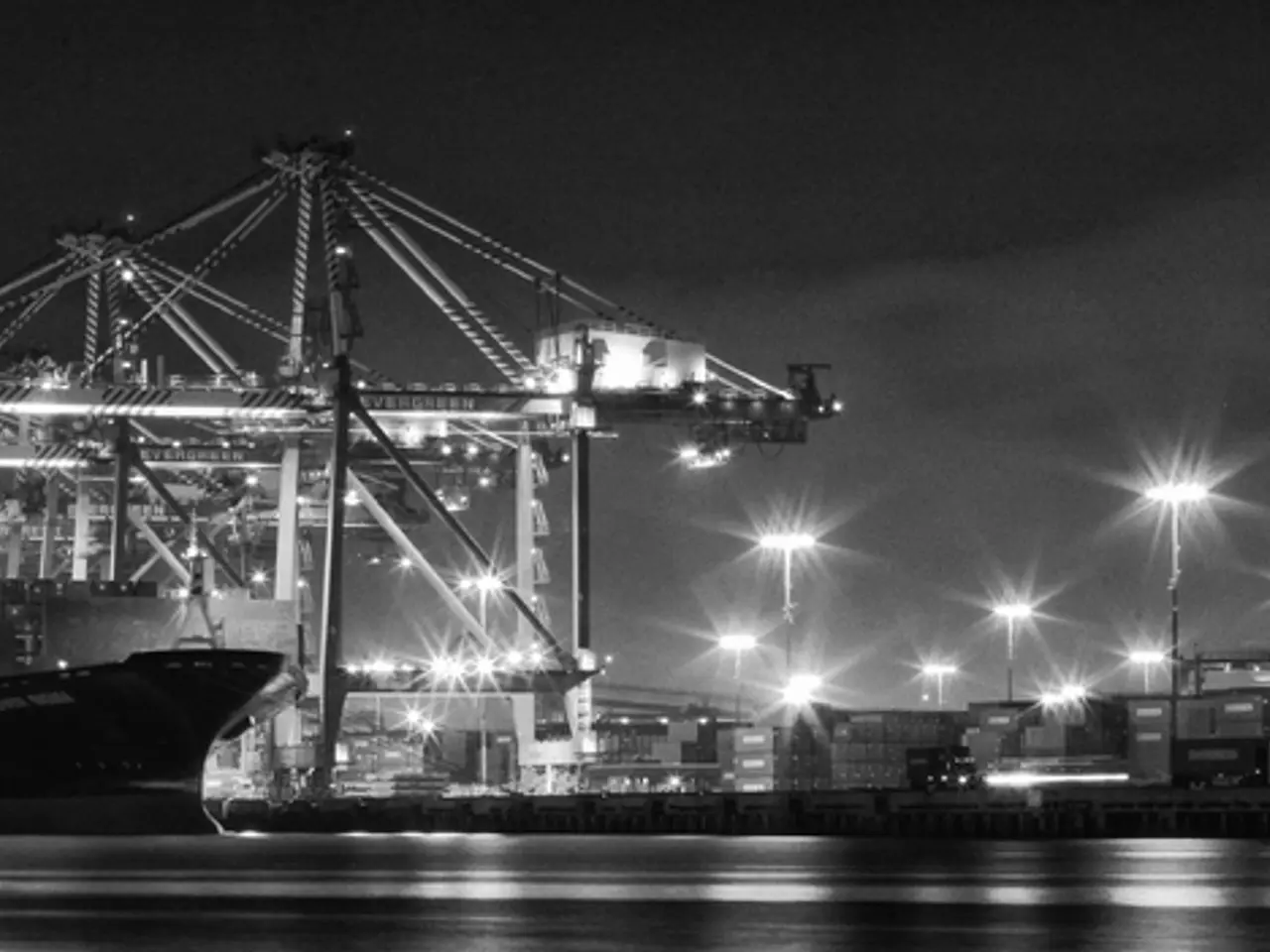Container shipping industry braces for prolonged overcapacity predicament, potentially lasting until 2028.
The container shipping industry is currently grappling with a significant overcapacity issue that is forecasted to persist and expand through 2028. This situation is likely to suppress container freight rates and earnings for carriers over the medium term.
Despite aging fleets, demolition activity has stalled in the first half of 2025, with only 10 ships totaling 5,454 TEU being scrapped, a sharp decline from 48,600 TEU during the same period last year. Shipowners are cautious about shedding tonnage, having faced multiple disruptions in recent years.
The ongoing overcapacity is underpinned by several key points. Fleet capacity is growing faster than demand, with net fleet growth expected to average 8.2% annually from 2025 to 2028. The orderbook-to-fleet ratio is high at around 31.1%, reflecting large newbuilding activity, particularly of ultra-large container vessels (ULCVs).
Demand growth, on the other hand, is relatively stagnant or growing only moderately. It is constrained by tariffs, geopolitical uncertainty, and shifts in trade routes. Some trade lanes face declining volumes due to tariff impacts and import adjustments.
Capacity utilization remains a concern, with the Red Sea crisis temporarily soaking up about 10% of capacity, keeping utilization relatively healthy (~86-87%). However, elsewhere, overcapacity and weak demand push rates downward.
Freight rates are expected to decline after firm rates in 2024 and early 2025. Steady declines are forecast from mid-2025 onward as growing supply outpaces demand. Spot freight rates have already dropped on major lanes, with expectations for further decreases throughout 2025 and beyond.
Because freight rates drive revenue, the overcapacity combined with weak demand pressures will likely continue to weigh on container carriers' earnings until at least 2028. Carriers may implement capacity discipline (blank sailings, reducing service levels) to try to stabilize rates, but overall margin pressures will remain.
In the first half of 2025 alone, 74 feeder and regional vessels (up to 4,000 TEU) were ordered, nearly matching the full-year total for 2024. With 3.3 million TEU set for delivery in 2028 alone and average annual fleet growth forecast at 7.3%, overcapacity will persist.
A growing trend in regional and sub-panamax vessel investment is reshaping the orderbook. Analysts warn that supply will continue to outpace demand until 2028. The container shipping industry is facing a prolonged period of overcapacity until at least 2028.
The slowdown in scrapping is attributed to strong freight and charter markets. Braemar estimates current vessel orders total 9.6 million TEU, about 30.5% of the active fleet as of July 1.
In conclusion, the container shipping sector faces an era of persistent overcapacity leading to softer freight rates and pressured earnings through 2028. Carriers’ ability to sustain earnings depends on how effectively they manage capacity and market disruptions amid these structural challenges.
The ongoing issue of overcapacity in the container shipping industry, fueled by growing fleet capacity faster than demand, has significant implications for global trade and the industry's finance and business. The orderbook-to-fleet ratio is high, reflecting large newbuilding activity, especially ultra-large container vessels (ULCVs). Despite strong freight and charter markets, shipowners are reluctant to demolish ships, potentially exacerbating the overcapacity issue. In contrast, demand growth is modest, limited by factors such as tariffs, geopolitical uncertainty, and shifts in trade routes. As a result, freight rates are expected to decline, putting pressure on container carriers' earnings until at least 2028.




